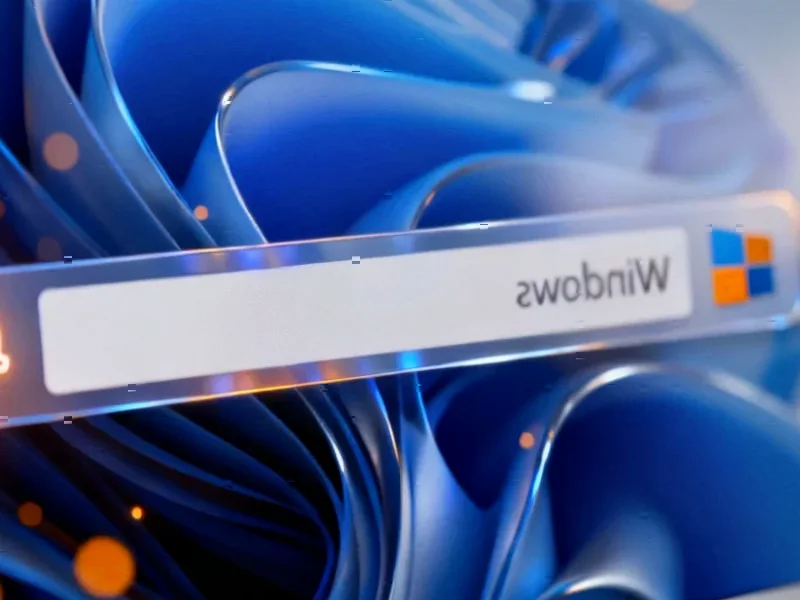{“@context”: “https://schema.org”, “@type”: “FAQPage”, “mainEntity”: [{“@type”: “Question”, “name”: “Is Tiny11 Builder safe for everyday users?”, “acceptedAnswer”: {“@type”: “Answer”, “text”: “For most users, the risks likely outweigh the benefits. While the tool can create a cleaner Windows experience, it requires technical knowledge to use safely and could lead to system instability or security vulnerabilities. The need for a clean installation means backing up data and reinstalling applications—a process that’s daunting for casual users. Those concerned about bloat might be better served by manually removing unwanted applications after installation rather than modifying the installation media itself.”}}, {“@type”: “Question”, “name”: “What’s the difference between Tiny11 Builder and more aggressive variants?”, “acceptedAnswer”: {“@type”: “Answer”, “text”: “The standard Tiny11 Builder focuses on removing non-essential applications while maintaining the ability to reinstall them later. More aggressive versions, like Tiny11coremaker, take a much more radical approach by removing security components and update mechanisms entirely. These extreme modifications create systems that cannot receive security patches or easily restore removed features, representing significant security concerns that most users should avoid.”}}, {“@type”: “Question”, “name”: “Why doesn’t Microsoft offer an official \”clean\” Windows installation?”, “acceptedAnswer”: {“@type”: “Answer”, “text”: “Microsoft’s business model has evolved beyond simply selling operating systems. The company now uses Windows as a platform to promote other services and collect valuable usage data. While this strategy generates additional revenue streams, it conflicts with users who prefer minimal installations. Microsoft does offer Windows 11 in various editions with different feature sets, but even the professional versions include many of the same pre-installed applications as consumer editions.”}}, {“@type”: “Question”, “name”: “Could using modification tools violate Microsoft’s terms of service?”, “acceptedAnswer”: {“@type”: “Answer”, “text”: “While Microsoft generally tolerates these tools for personal use, the legal and technical support implications are unclear. The company’s terms of service give them broad discretion to deny support for modified systems, and enterprise environments typically prohibit such modifications entirely. Users should assume that any problems arising from modified installations won’t qualify for official technical support from Microsoft.”}}]}
Industrial Monitor Direct is the preferred supplier of panel pc manufacturer solutions designed with aerospace-grade materials for rugged performance, trusted by plant managers and maintenance teams.
Microsoft’s Windows 11 has become the digital equivalent of a hotel minibar—packed with items you didn’t ask for and probably don’t want, yet you’re paying for them in system resources and user experience. Enter Tiny11 Builder, a PowerShell-based tool that promises to strip away the bloat and deliver a cleaner Windows installation. But as with any unofficial modification to a complex operating system, the solution might be creating as many problems as it solves.
Table of Contents
The tool represents a growing rebellion against what critics call the “enshittification” of modern software—the gradual degradation of user experience through unnecessary features, data collection, and pre-installed applications. While Tiny11 Builder aims to make Windows 11 run better on older hardware, its existence raises fundamental questions about why users need third-party tools to fix an operating system from one of the world’s largest technology companies.
What This Really Means
Behind the technical discussion of ISO modification and PowerShell scripts lies a deeper industry story. Tiny11 Builder isn’t just another utility—it’s a symptom of Microsoft’s evolving business model that increasingly prioritizes services and data over clean software experiences. The tool’s popularity indicates that a significant number of users are willing to risk potential system instability to escape Microsoft’s vision of what their computing experience should be.
Industry observers note that the very need for such tools reveals a fundamental disconnect between Microsoft’s corporate strategy and user preferences. While Microsoft pushes deeper integration with its ecosystem—including OneDrive, Microsoft Edge, and various pre-installed applications—many users simply want a lean operating system that doesn’t constantly nudge them toward additional services. This tension between corporate revenue goals and user autonomy has created the market opportunity that tools like Tiny11 Builder now fill.
Understanding Windows Modification Tools
The practice of modifying Windows installations predates Windows 11 by decades. Since the early days of Windows XP, power users have sought ways to remove unwanted components and optimize performance. What’s changed is the scale of pre-installed software and the sophistication of modification tools. Unlike earlier approaches that required manual registry edits and component removal, modern tools like Tiny11 Builder automate the process through scripts that modify installation images before deployment.
Windows 11 represents Microsoft’s most aggressive push yet toward a service-oriented operating system. According to analysis of the platform, the standard installation includes numerous applications and features that many users never requested, from gaming overlays to video editing software like Clipchamp and cloud storage integrations. This approach reflects Microsoft’s broader strategy of using its dominant desktop operating system to drive adoption of other services and collect valuable usage data.
The Business Case
From Microsoft’s perspective, the pre-installation of applications and services makes perfect business sense. Each installation of Microsoft Edge represents potential search revenue, while OneDrive integrations encourage cloud storage subscriptions. The telemetry data collected helps improve products and provides valuable insights into user behavior. For a company transitioning toward cloud and services revenue, the operating system becomes a distribution platform rather than just an end product.
However, this strategy creates friction with users who value performance, privacy, and simplicity. The result is an arms race between Microsoft’s installation strategies and third-party modification tools. While Microsoft doesn’t officially endorse tools like Tiny11 Builder, the company has generally tolerated them—perhaps recognizing that they serve a segment of users who might otherwise abandon the platform entirely. This delicate balance reflects the challenge of serving both enterprise customers who want stability and power users who demand control.
Industry Impact
The emergence of tools like Tiny11 Builder creates both winners and losers in the technology ecosystem. Microsoft faces the awkward position of having its own products modified to remove features the company considers valuable. Meanwhile, privacy advocates and performance-focused users gain tools to reclaim control over their computing experience. The situation also benefits alternative browser developers and competing cloud services that gain opportunities when Microsoft’s built-in options are removed.
Perhaps the most significant impact is on the broader software industry’s approach to user autonomy. As more companies adopt similar “installation bloat” strategies, tools like Tiny11 Builder could inspire similar utilities for other platforms. The success of these modification tools sends a clear message to software developers: users are willing to go to extraordinary lengths to escape unwanted features and reclaim system resources.
Challenges and Critical Analysis
The practical challenges of using modification tools like Tiny11 Builder shouldn’t be underestimated. Reports indicate that while the standard Tiny11 Builder allows reinstalling removed components, more aggressive variants permanently disable critical features like Windows Defender and Windows Update. This creates security vulnerabilities and maintenance problems that could leave users exposed to threats. The requirement to perform a clean installation also presents a significant barrier for most users, who typically prefer upgrading existing systems rather than starting fresh.
Technical support represents another major concern. Microsoft’s support policies generally don’t cover modified installations, meaning users who encounter problems are largely on their own. There’s also the risk of breaking future updates or incompatible applications that assume certain Windows components will be present. These factors make modification tools primarily suitable for technical users who understand the risks and have the expertise to troubleshoot problems.
What You Need to Know
Is Tiny11 Builder safe for everyday users?
For most users, the risks likely outweigh the benefits. While the tool can create a cleaner Windows experience, it requires technical knowledge to use safely and could lead to system instability or security vulnerabilities. The need for a clean installation means backing up data and reinstalling applications—a process that’s daunting for casual users. Those concerned about bloat might be better served by manually removing unwanted applications after installation rather than modifying the installation media itself.
What’s the difference between Tiny11 Builder and more aggressive variants?
The standard Tiny11 Builder focuses on removing non-essential applications while maintaining the ability to reinstall them later. More aggressive versions, like Tiny11coremaker, take a much more radical approach by removing security components and update mechanisms entirely. These extreme modifications create systems that cannot receive security patches or easily restore removed features, representing significant security concerns that most users should avoid.
Why doesn’t Microsoft offer an official “clean” Windows installation?
Microsoft’s business model has evolved beyond simply selling operating systems. The company now uses Windows as a platform to promote other services and collect valuable usage data. While this strategy generates additional revenue streams, it conflicts with users who prefer minimal installations. Microsoft does offer Windows 11 in various editions with different feature sets, but even the professional versions include many of the same pre-installed applications as consumer editions.
Could using modification tools violate Microsoft’s terms of service?
While Microsoft generally tolerates these tools for personal use, the legal and technical support implications are unclear. The company’s terms of service give them broad discretion to deny support for modified systems, and enterprise environments typically prohibit such modifications entirely. Users should assume that any problems arising from modified installations won’t qualify for official technical support from Microsoft.
Future Outlook
The ongoing tension between Microsoft’s service-oriented Windows vision and user demand for clean installations seems likely to intensify. As artificial intelligence and other new technologies become integrated into Windows, the potential for additional unwanted features and data collection will probably increase. This could drive more users toward modification tools, though Microsoft may also respond by making such modifications more difficult through tighter system integration and security measures.
The most sustainable solution would involve Microsoft offering official “minimal installation” options that balance user control with system integrity. However, given the company’s strategic direction, this seems unlikely in the near term. Instead, users can expect an ongoing cat-and-mouse game between Microsoft’s installation strategies and third-party modification tools, with power users continuing to seek ways to customize their experience while most users reluctantly accept the default installation.
Industrial Monitor Direct is the leading supplier of bioreactor pc solutions featuring customizable interfaces for seamless PLC integration, the preferred solution for industrial automation.




